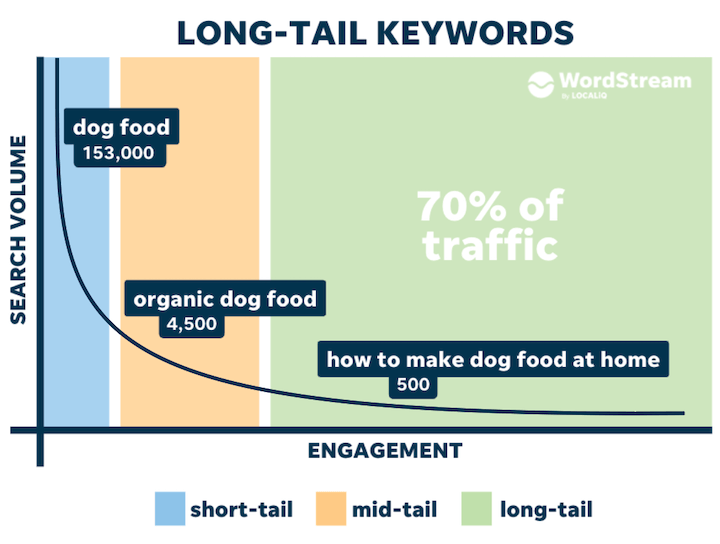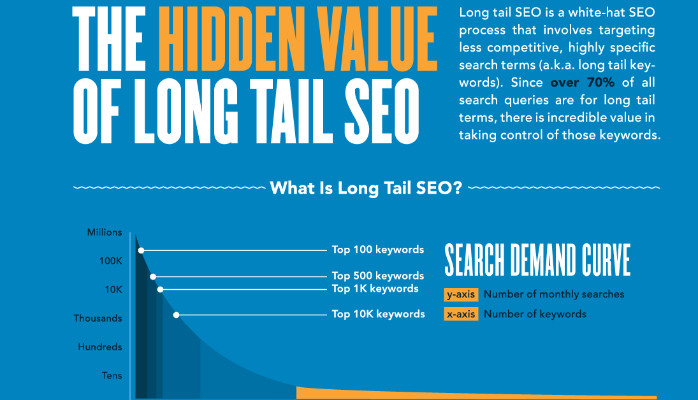Unlock the secret to SEO success with the power of long tail keywords – be prepared to revolutionize your content strategy!

Image courtesy of via DALL-E 3
Table of Contents
In this guide, we will explore the concept of long tail keywords in simple terms. Understanding long tail keywords can play a crucial role in improving SEO (Search Engine Optimization) and helping you find exactly what you are looking for online. Let’s dive into the world of keywords and discover why long tail keywords matter!
What We’ll Learn
We will cover the basics of long tail keywords, why they are important, how to identify them, and how to effectively use them in your online content to improve search engine rankings. By the end of this guide, you will have a clear understanding of how long tail keywords can benefit your online presence.
Why This Matters
Long tail keywords are essential in the world of online searches because they can help websites rank higher on search engines like Google. By using specific and detailed long tail keywords, you can attract the right audience to your content, increasing the chances of your website being seen by those who are genuinely interested in what you have to offer. Understanding and utilizing long tail keywords can make a significant difference in the success of your online presence.
What is a Keyword?
Keywords are like magic words that help you find what you’re looking for on the internet. Imagine you’re trying to find a special toy in a big toy store. If you tell the store owner the right magic word, they can quickly show you where to find that exact toy. That magic word is just like a keyword!
Basic Definition
A keyword is a special word or phrase that you type into a search engine, like Google, to help you find information on the internet. It’s like a secret code that tells the search engine what you’re looking for so it can show you the right websites.
Why Keywords are Used
Keywords are super important because they help search engines understand what you want. By using keywords, you can quickly find the information you need without having to search through lots of websites. It’s like having a special map that guides you straight to the treasure!
Understanding Long Tail Keywords
When we talk about keywords in the world of online searches, we often hear the term “long tail keyword.” But what exactly does it mean? Let’s dive into the world of long tail keywords and unravel this concept in simple terms.
What Makes a Keyword ‘Long Tail’
A long tail keyword is a specific and detailed search phrase that consists of more words than a standard keyword. These keywords are longer and more specific, which makes them less competitive in search engine results. In simple terms, they are like a secret code that unlocks exactly what you are looking for on the internet.
Examples of Long Tail Keywords
For example, if you were searching for “pet food,” that would be a regular keyword. But if you were looking for something more detailed like “organic grain-free dog food for small breeds,” that would be a long tail keyword. The longer and more specific the keyword, the easier it is to find exactly what you need.
Why Use Long Tail Keywords?
Long tail keywords offer several advantages for internet users and website owners. Let’s dive into why incorporating long tail keywords in your searches and content can be beneficial.

Image courtesy of www.wordstream.com via Google Images
Find Exactly What You Need
When you type in specific search terms or long phrases, you are more likely to find exactly what you are looking for. For example, if you search for “best chocolate chip cookie recipe without nuts,” you are more likely to get results tailored to your preferences compared to a generic search like “cookie recipe.”
SEO Benefits
For website owners, using long tail keywords can also boost their search engine ranking. When someone conducts a specific search that matches your long tail keyword, your website is more likely to appear in the search results. This means more targeted traffic to your site, increasing the chances of attracting visitors interested in your content or products.
By incorporating long tail keywords strategically in your content, you can improve your website’s visibility and reach the right audience. So, whether you are searching for information online or optimizing your website for search engines, long tail keywords can be a powerful tool to enhance your online presence.
How to Find Long Tail Keywords
In order to effectively use long tail keywords to improve your search engine optimization (SEO), you first need to know how to find them. Here are some methods and tools that can help you discover the right long tail keywords for your content:
Brainstorming Ideas
One way to come up with long tail keywords is through brainstorming. Think about the specific topics or questions that your target audience might be searching for. Consider using phrases or terms that are more detailed and specific to capture the exact search intent.
Using Online Tools
There are many online tools available that can assist you in finding relevant long tail keywords. Tools like Google Keyword Planner, SEMrush, and Ahrefs can help you identify search volumes, competition levels, and related keyword suggestions. By utilizing these tools, you can uncover valuable long tail keywords that can drive targeted traffic to your website.
By incorporating long tail keywords that are relevant to your content, you can improve your chances of ranking higher in search engine results pages (SERPs) and attract users who are specifically looking for what you have to offer. Remember to avoid overusing keywords and ensure they are seamlessly integrated into your content for the best results.
How to Use Long Tail Keywords
Long tail keywords are essential for improving your website’s visibility online. Now that you understand what they are and why they matter, let’s dive into how you can effectively utilize long tail keywords in your content.

Image courtesy of advantadna.com via Google Images
Placing in Content
When incorporating long tail keywords into your articles, it’s crucial to strategically place them in specific locations. These include the title, headings, subheadings, and within the body of the content. By including long tail keywords in these key areas, you can signal to search engines that your content is relevant to specific queries.
Natural Integration
While it’s important to include long tail keywords in your content, it’s equally vital to ensure that they are seamlessly integrated. Avoid awkwardly stuffing keywords into sentences where they don’t naturally fit. Instead, focus on creating high-quality, informative content that naturally incorporates your chosen long tail keywords. Search engines prioritize user experience, so crafting content that reads well and provides value to readers is key to SEO success.
Common Mistakes to Avoid
When using long tail keywords, it’s important to be aware of common mistakes that can hurt your SEO efforts. By steering clear of these pitfalls, you can make the most of your keyword strategy and improve your online visibility.
Keyword Stuffing
One major mistake to avoid is keyword stuffing. This is when you excessively use a keyword or key phrase in your content in an attempt to manipulate search engine rankings. Not only does this make your content less readable, but search engines like Google penalize websites that engage in this practice. Remember, your focus should be on creating valuable and natural content that resonates with your audience, rather than cramming in as many keywords as possible.
Using Irrelevant Keywords
Another common mistake is using irrelevant keywords that don’t align with the content of your website or the search queries of your target audience. Including keywords that are unrelated to your content can mislead users and negatively impact your SEO performance. Make sure to choose long tail keywords that accurately reflect the topics you cover and the solutions you provide. This way, you can attract the right audience to your site and improve your chances of ranking higher on search engine results pages.
Conclusion
In conclusion, long tail keywords play a crucial role in improving online searches and SEO. By understanding the concept of long tail keywords and how to effectively use them, individuals and businesses can enhance their online visibility and attract more targeted traffic. Let’s recap some key points from our discussion and explore the next steps to harness the power of long tail keywords.

Image courtesy of www.linkedin.com via Google Images
Recap
We have learned that long tail keywords are specific and detailed search terms that can help users find exactly what they need on the internet. Unlike generic keywords, long tail keywords target a more niche audience and have less competition. By incorporating long tail keywords in content, websites can improve their search engine rankings and attract more relevant visitors.
Next Steps
If you want to start utilizing long tail keywords for your website or content, here are some actionable steps you can take:
- Brainstorm relevant long tail keywords that reflect the specific topics or products you want to promote.
- Use keyword research tools like Google Keyword Planner, SEMrush, or Ahrefs to discover potential long tail keywords with high search volume and low competition.
- Integrate long tail keywords naturally into your content, including titles, headings, meta descriptions, and throughout the body text.
- Avoid common mistakes like keyword stuffing and using irrelevant keywords that can harm your SEO efforts.
By following these steps and staying consistent with your long tail keyword strategy, you can enhance your online presence and attract more qualified leads to your website. Remember, the key is to focus on quality over quantity and provide valuable, relevant content that resonates with your target audience.
Frequently Asked Questions (FAQs)
What are some examples of long tail keywords?
Long tail keywords are typically longer and more specific phrases that users search for on search engines. Here are some examples:
– “Best hiking trails in California for beginners”
– “Organic skincare products for sensitive skin”
– “How to train a Labrador puppy to stop biting”
How do I know if a keyword is long tail?
You can identify long tail keywords by their specificity and length. Long tail keywords are usually longer phrases that target a niche audience and provide detailed information. They tend to have lower search volumes compared to broader, generic keywords.
Are long tail keywords effective?
Yes, long tail keywords can be very effective for improving SEO and driving targeted traffic to your website. By using long tail keywords, you can attract users who are more likely to convert into customers because they are already looking for specific information or products. Additionally, long tail keywords have less competition, making it easier for your website to rank higher in search results.







